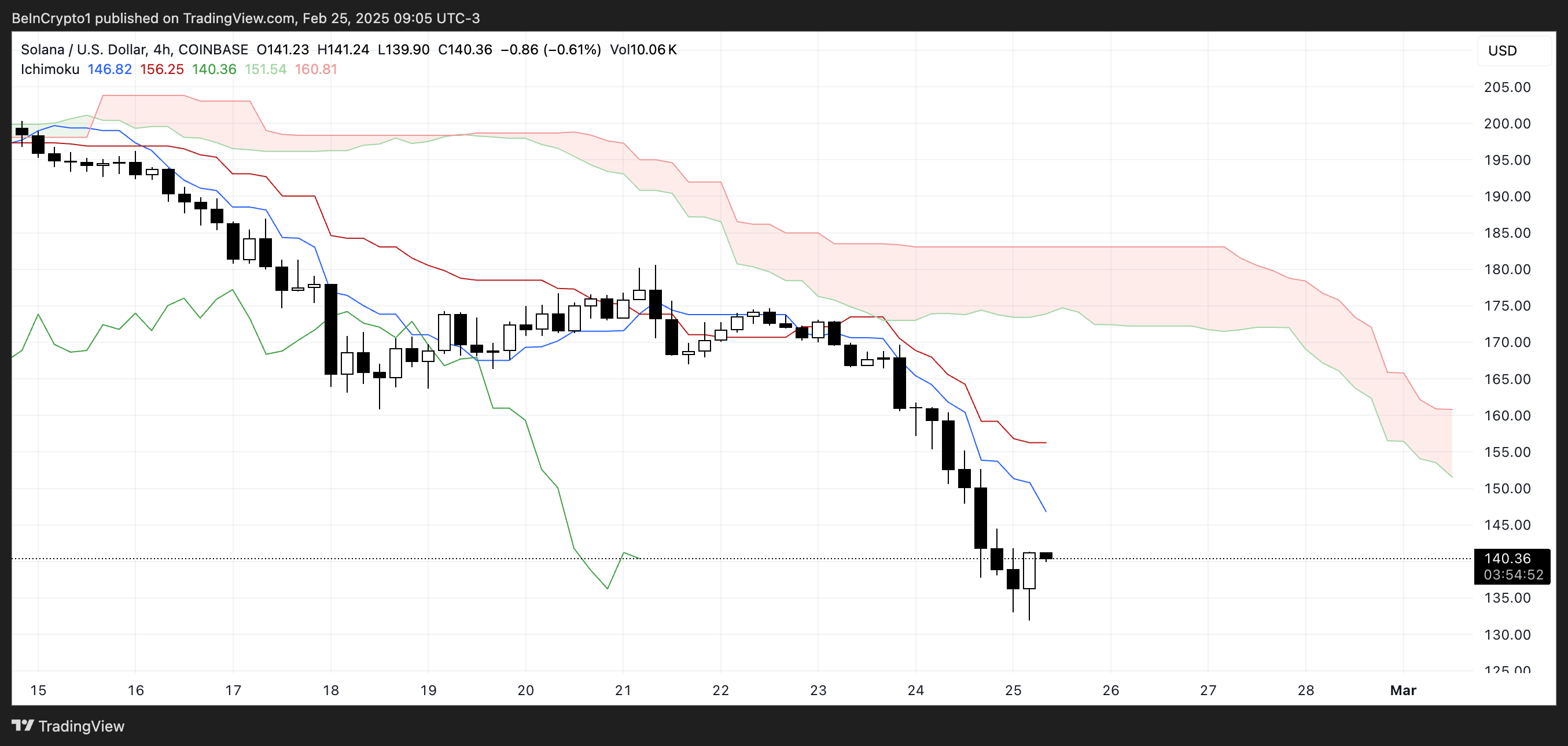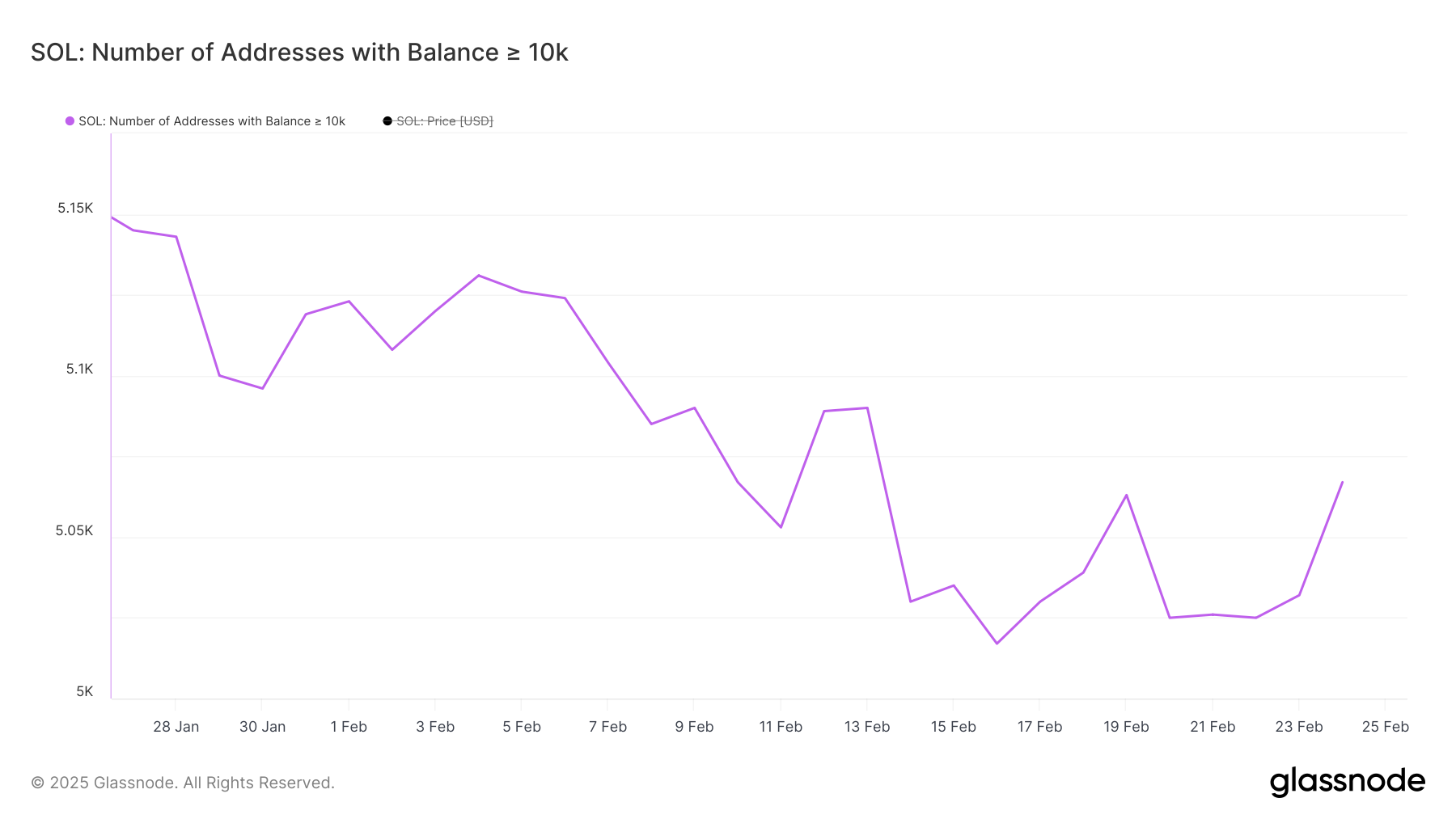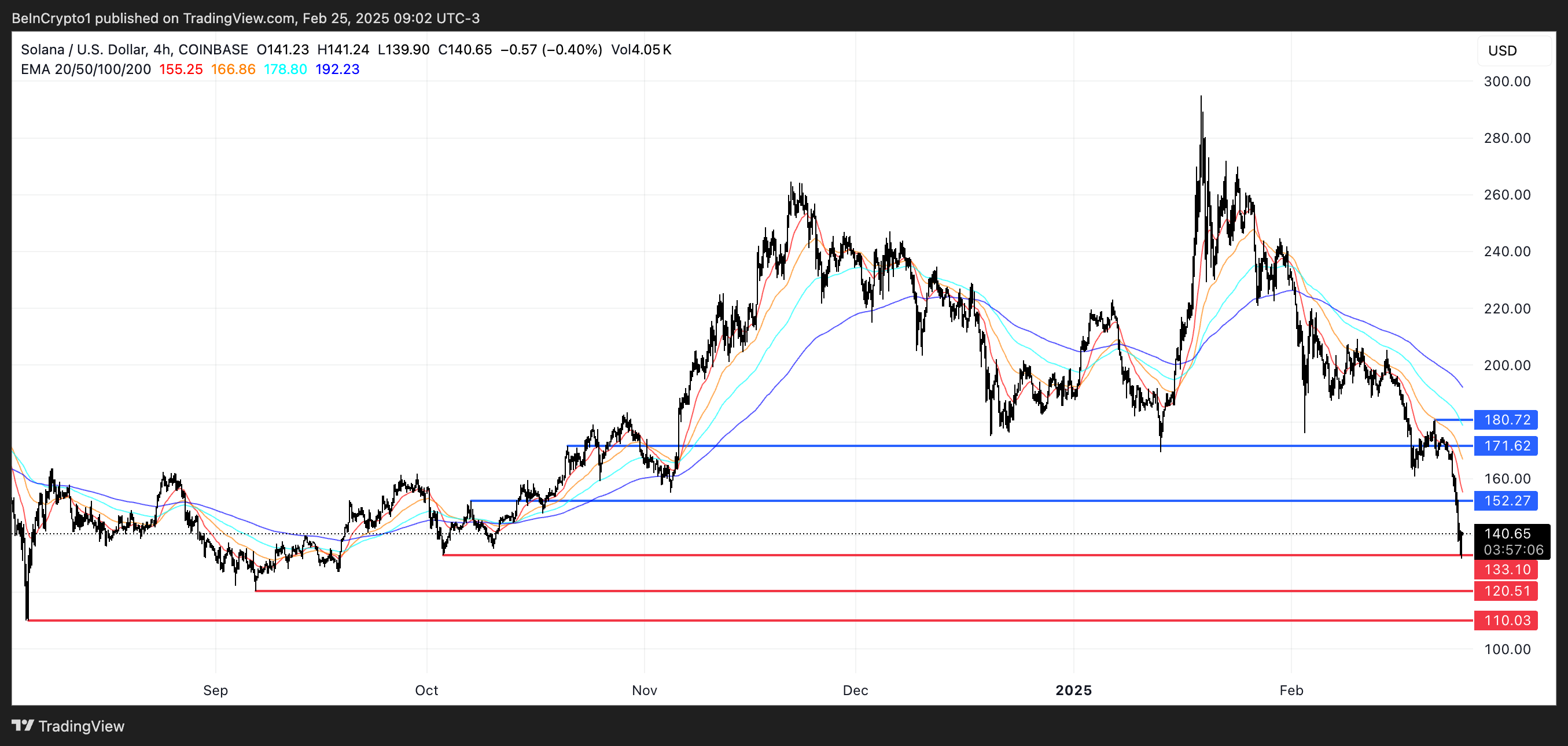-
Solana (SOL) has experienced a significant price drop of 12% within the last 24 hours, culminating in a staggering 45% decline over the past month, indicating strong bearish momentum.
-
The Ichimoku Cloud and Exponential Moving Average (EMA) indicators reflect a dominant bearish trend, highlighting key levels that may sustain downward pressure.
-
Caution prevails among investors, as whale activity indicates a slow accumulation pattern that is insufficient to counteract the current bearish outlook, leading to persistent selling pressure.
Solana’s recent 12% drop marks a continuation of its bearish trend, fueled by strong EMA and Ichimoku Cloud indicators forecasting further declines.
Analyzing Solana’s Ichimoku Cloud: A Clear Bearish Outlook
The latest readings from the Ichimoku Cloud for Solana demonstrate a distinctly bearish trend. With the price trading well below the cloud, the indicators suggest a robust downward momentum. The establishment of a red cloud ahead further reinforces this bearish sentiment, as evidenced by Leading Span A (green line) being positioned beneath Leading Span B (red line).
This structural setup indicates that the prevailing negative momentum in Solana’s market is not likely to halt. The indicators show the Tenkan-sen (blue line) positioned below the Kijun-sen (red line), amplifying the bearish pressure. Moreover, the Chikou Span (green lagging line) remaining below the price action affirms the overall pessimistic sentiment surrounding Solana.

SOL Ichimoku Cloud. Source: TradingView.
Though a brief consolidation phase occurred, Solana’s price again faltered, solidifying the ongoing bearish structure. For any potential trend reversal, prices would need to breach above both the Tenkan-sen and Kijun-sen before re-entering the cloud, a scenario that seems unlikely given current market conditions.
Solana Whale Behavior: Accumulation vs. Selling Pressure
The count of Solana whales—defined as addresses holding a minimum of 10,000 SOL—has seen a steady decline over the previous 30 days, dropping to 5,017 as of February 16, representing the lowest count since December 2024.
This reduction in whale activity suggests that large holders are offloading their assets, further contributing to the bearish trend reflected on the Ichimoku Cloud. Generally, the reduction in whale positions leads to increased selling pressure, which reinforces negative market momentum.

Solana Whales. Source: Glassnode.
Understanding whale activity is crucial, as these large holders wield significant influence over price fluctuations. Their buying or selling behaviors can act as barometers of emerging market trends, given their control over a substantial segment of the asset supply.
Recently, there are indications that the number of Solana whales has started to stabilize, reaching 5,067. While this figure represents a marginal recovery, it still falls short of previous months’ highs, yet remains comparatively elevated when viewed through a historical lens. This cautious accumulation behavior suggests an attempt to capitalize on low prices; however, it remains insufficient to alter the bearish outlook depicted in the Ichimoku analysis.
Future Projections: Can Solana Avoid Further Decline?
Examining the EMA lines for Solana reveals a pronounced bearish setup, characterized by short-term averages positioned below long-term ones along with a notable gap signifying robust downward momentum.
This prevailing trend implies that if downside pressures persist, Solana may test key support levels around $133. Should this support yield, further declines could lead SOL to potentially record prices as low as $120 or $110, which would represent its lowest value since August 2024.

SOL Price Analysis. Source: TradingView.
Conversely, any signs of trend reversal would be pivotal. If Solana halts its downtrend, the initial resistance challenge would be at $152. Successful penetration of this level could see targets shift to $171 and potentially to $180. Additionally, market participants are increasingly attentive to the potential implications stemming from a $1.9 billion Solana unlock scheduled for March 1, which may further influence market dynamics.
Conclusion
The current situation surrounding Solana is marked by a strong bearish outlook, as evidenced by critical technical indicators. Both the Ichimoku Cloud and EMA analysis emphasize a continuing downward trajectory. Caution remains evident among large holders, as whale activity does not yet show sufficient signs of reversing the prevailing trend. Investors should monitor key support levels closely, as further declines may shape the near-term outlook for Solana.
